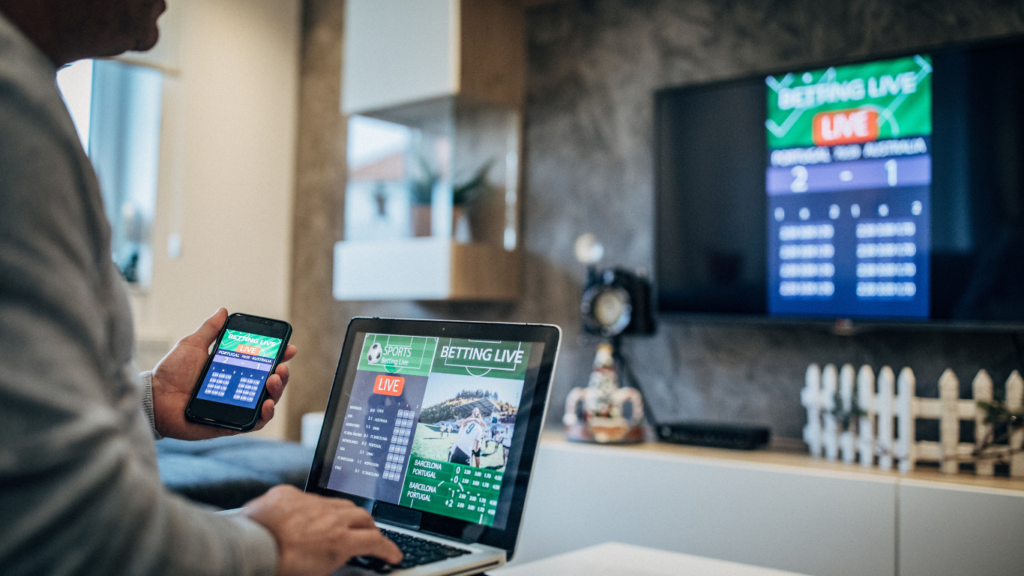Sports betting can feel overwhelming at first, especially when you’re staring at a sea of numbers and terms that don’t make much sense. Odds are the foundation of every wager, and understanding them is key to making informed decisions. Whether you’re new to betting or just looking to sharpen your skills, getting a handle on odds is a game-changer.
What Are Sports Betting Odds?
Sports betting odds represent the probability of an event happening and determine potential payouts. They are the cornerstone of informed wagering, enabling bettors to interpret likelihoods and associated risks.
Key Concepts in Sports Betting Odds
Three common formats define sports betting odds: decimal, fractional, and moneyline. Decimal odds, popular in Europe, express total returns as a multiplier (e.g., 2.5 means $100 bet yields $250). Fractional odds, widely used in the UK, display potential profit relative to the stake (e.g., 5/1 means $100 bet wins $500 profit). Moneyline odds, common in the US, showcase payouts for $100 wagers on positive odds (e.g., +200) or required stakes to win $100 when negative (e.g., -150).
Implied probability is another crucial concept in odds interpretation. For example, converting decimal odds (1/decimal odds x 100) or moneyline odds reveals the event’s estimated likelihood, helping to evaluate value bets. Bettors compare this implied probability to their own assessment of an outcome’s chance.
Why Sports Betting Odds Matter
- Odds reflect bookmakers’ evaluations of specific events and include a margin for profit.
- They influence betting strategies, serving as a benchmark to assess if the perceived opportunity offers value.
- Value betting occurs when your probability estimation exceeds the implied probability offered by the odds.
- Recognizing odds formats simplifies engagement across platforms.
- Accurate odds understanding elevates decision-making, avoids losses, and identifies high-reward scenarios. For instance, knowing the difference between +150 moneyline odds and 2.50 decimal odds ensures clarity when switching markets or operators.
Types Of Sports Betting Odds
Understanding the types of sports betting odds is essential for interpreting potential payouts and probabilities. These odds formats include:
- decimal
- fractional
- American
each suited to different regions and preferences.
Decimal Odds
Decimal odds, often used in Europe, Australia, and Canada, are straightforward. They represent the total amount returned for every unit wagered, including the stake. For example, odds of 2.50 mean a $10 bet would return $25 ($15 profit and $10 stake). I find this format helpful for quickly calculating potential returns by multiplying the odds with the stake.
Fractional Odds
Fractional odds, common in the UK and Ireland, express profit relative to the stake as a fraction. For instance, odds of 5/1 indicate a $10 bet yields $50 profit plus the $10 stake, totaling $60. I notice these odds are often associated with horse racing and are favored for their clarity among seasoned bettors.
American Odds
American odds, also called moneyline odds, are primarily used in the United States. They present odds as positive (e.g., +200) or negative (e.g., -150) numbers. Positive odds reflect potential profit from a $100 bet, while negative odds show the stake needed to earn $100. For instance, +200 means a $100 bet generates $200 profit, and -150 means wagering $150 yields $100 profit. I recommend this format to those familiar with US-based sports betting markets.
How To Read And Interpret Betting Odds

Betting odds convey essential information about potential payouts and the likelihood of outcomes. Interpreting odds requires understanding their structure and the data they represent.
Calculating Potential Payouts
Calculating potential payouts starts with analyzing the odds format. Decimal odds provide the simplest calculation: multiply the stake by the odds to get the total return. For example, with a $10 stake on odds of 2.50, the return equals $25 ($10 x 2.50). Fractional odds calculate only the profit, requiring you to add the stake for the total payout. A 5/1 fraction means a $10 wager results in a $50 profit, totaling $60 ($50 + $10). American odds split into positive and negative values. With +150, a $100 bet yields $150 profit; a -200 requires $200 to win $100.
Understanding Probability Implied by Odds
Odds represent implied probability, the event’s likelihood as evaluated by bookmakers. To convert decimal odds, divide 1 by the odds, then multiply by 100 for the percentage. For example, 2.50 odds equal a 40% implied probability (1/2.50 x 100). Fractional odds use the formula denominator/(denominator + numerator) x 100. A 5/1 fraction implies a 16.67% probability (1/(1+5) x 100). For American odds, positive numbers use 100/(odds + 100) x 100; +150 is 40% (100/(150+100) x 100). Negative numbers use odds/(odds + 100) x 100; -200 is 66.67% (200/(200+100) x 100).
Interpreting this probability helps identify value bets by comparing personal predictions with bookmaker assessments.
Factors That Affect Sports Betting Odds
Sports betting odds are influenced by multiple elements that bookmakers analyze to set their numbers. Understanding these factors helps bettors identify why odds fluctuate and how they reflect real-world conditions.
Team/Player Performance
A team’s or player’s recent performance significantly impacts betting odds. High-performing teams or players typically carry lower odds due to their increased probability of winning. For example, a football team on a winning streak may be favored, resulting in less favorable payouts for bets placed on them. Conversely, underperforming teams or players often have higher odds, enticing bettors with potentially larger returns. Bookmakers also weigh historical head-to-head results, current form, and momentum when adjusting these odds.
External Factors (Injuries, Weather, etc.)
External circumstances beyond team or player control also play a critical role. Injuries, for instance, create notable shifts in odds, especially if key players are affected. A star player’s absence can substantially impact a team’s chances of winning, leading bookmakers to adjust predictions accordingly. Weather conditions can similarly alter odds, particularly in outdoor sports like tennis or football. Rain or extreme temperatures might reduce a team’s performance, influencing both gameplay and the likelihood of specific outcomes. Additionally, location factors like home-field advantage are considered in odds adjustment.
Tips For Using Sports Betting Odds Effectively
Using sports betting odds effectively requires strategy and preparation. Prioritizing bankroll management and thorough research increases the likelihood of making smarter wagers.
Managing Your Bankroll
Maintaining control of your bankroll is critical when betting on sports. I allocate a fixed percentage of my total bankroll per wager, often between 1-5%, to minimize potential losses and extend my betting activity. For instance, if my bankroll is $1,000, I typically stake $10-$50 per bet, depending on confidence and risk tolerance.
Tracking each bet is essential for analyzing performance over time. I log details including wager amount, odds, and outcomes, allowing me to identify patterns and adjust strategies if needed. Consistency in staking methods helps me avoid erratic betting decisions driven by emotion.
Researching and Comparing Odds
Comparing odds across multiple sportsbooks uncovers value opportunities. Bookmakers often differ in their assessments, so I check several platforms to find the best odds for my selected event. For example, if one sportsbook offers +150 odds while another lists the same bet at +160, betting on the higher odds increases potential profit.
Studying team and player statistics, recent performances, and external factors helps me make informed evaluations. By cross-referencing this analysis with implied probabilities from the odds, I identify discrepancies and assess bet value accurately.



 Mark Buxtononics is the Senior Betting Analyst at Gamble Time Hub, bringing sharp analytical skills and a deep understanding of betting markets to the forefront. Specializing in data-driven insights and predictive analysis, Mark delivers in-depth evaluations of sports betting trends, odds movements, and strategic plays. His work helps readers make smarter, more informed decisions across a variety of betting platforms. With a commitment to clarity and accuracy, Mark plays a key role in establishing Gamble Time Hub as a reliable source for expert betting knowledge.
Mark Buxtononics is the Senior Betting Analyst at Gamble Time Hub, bringing sharp analytical skills and a deep understanding of betting markets to the forefront. Specializing in data-driven insights and predictive analysis, Mark delivers in-depth evaluations of sports betting trends, odds movements, and strategic plays. His work helps readers make smarter, more informed decisions across a variety of betting platforms. With a commitment to clarity and accuracy, Mark plays a key role in establishing Gamble Time Hub as a reliable source for expert betting knowledge.

